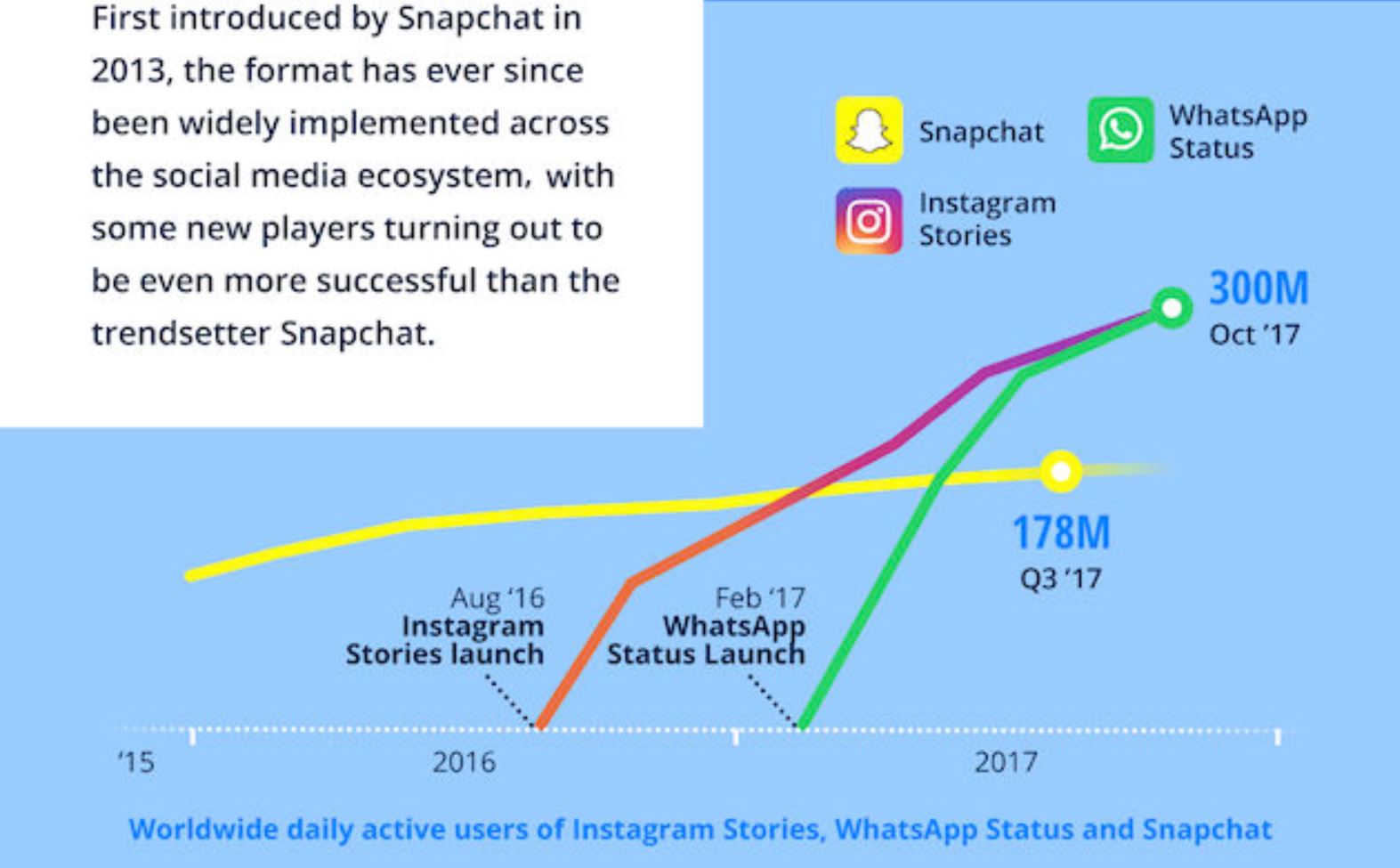If you’ve landed on our Hawaii Marketing Tips blog by accident while searching for Team Vision Marketing, please visit our homepage, creative portfolio or client video testimonials.

Hear from Harry A. Saunders, President of Castle & Cooke Hawaii, on his 20 years of experience working with Team Vision.
- How to Select The Best Hawaii Advertising Agency for Your Business
- How AI Will Transform Marketing
- What Is IP Targeting and How Can I Use It for My Business?
- Everything You Need to Know About Instagram’s “Hidden Likes” Test
- Hawaii Social Media Marketing Tips
- How To Succeed in Zero-Click Search SEO
- Social Media Marketing Trends
- Your Guide to Google Rich Search Features
- What to Expect After A Google Broad Core Algorithm Update
- Top 5 Facebook Story Sticker Tips
- Hawaii Search Engine Optimization – SEO Companies
- Top 10 Instagram Story Sticker Tips
- Know The Common Difference: Black Hat SEO vs. White Hat SEO
- 10 Types of Content That Will Boost Engagement
- Video Advertising is Growing – Are You Making the Shift?
- Why You Should Advertise on Facebook Messenger
- Buying Instagram Followers – Is It Worth The Money?
- Top 10 Instagram Hashtag Tips for 2019
- 2018 Social Media Trends: Were We Right On The Money?
- Dreaded Advertising Agency Requests Roundup
Call Us Today at (808) 536-0416.

Hey Google, Why Should We Optimize Our Web Site For Voice Search?
Voice searching technology is changing the way we browse and shop on the internet. We can look up almost anything on the web just by saying, “Hey Google…” or “Hey Siri…” We can even turn on the lights, send texts, play music, and plan our day with a quick verbal request.

Image Source: KPCB/Mary Meeker’s Annual 2016 Internet Report
As voice searching continues to gain popularity among all age groups, businesses must rethink their Search Engine Optimization (SEO) strategies and how they write their web page content.
- In 2017, one in six Americans owned a voice-activated smart-speaker
- According to Forbes, OC&C Strategies Consultants found that voice search accounted for $1.8 billion on Amazon’s 2017 sales. They predict that sales will increase to $40 billion by 2022.
- 44% of people regularly use voice-activated technology order groceries, household items, etc. at least once a week.
- 20% of inquiries on the Google app are by voice searches.
- 22% of voice searches are for local information and 30% are for general information, according to Mary Meeker’s Annual 2016 Internet Report.
- Garner reports that by 2020, voice-activated searches will account for 30% of web browsing.
- Emarketer predicts that in 2019, 39.3% of Millennials, 17.2% Gen X, and 10.1% of Baby Boomers will use their voice-enabled digital assistant on their devices.
So, how can we incorporate voice searching in our SEO strategy?
1. Add Schema Markup To Your Site
Search engine algorithms are based on multiple factors that relate to your web site’s content. This is why in addition to producing quality content, it’s essential to incorporate keywords and metadata into your site.
A schema markup is essentially like metadata, which is a set of code that helps search engines organize and classify your website’s content and enables search enhancements. You can use schema markups to optimize information that voice search users will be looking for, like contact information, operational times, directions, and so on.
It may seem daunting for those who are not familiar with coding, but this is an important tactic to use. If you need assistance on any of your web-based needs, give Team Vision Marketing a call. We have extensive experience designing web sites and developing innovative digital and SEO programs for our clients. Check out our web design and marketing work in our portfolio.
2. Use Long Tail Keywords and Keep Your Content Conversational
It requires less effort to say a complete sentence than typing out one, which is why voice searches tend to be longer and more conversational than traditional search engine phrases. Thus, brands should be writing content in a natural speaking voice that includes long tail keywords, which are search phrases that are three to five words long. It might also be worthwhile to test bids on long tail keywords. For example, Team Vision would bid on keywords like “Top Hawaii Marketing Agency” or “Hawaii Advertising Agency”.
Tip: Use Google Search Console to see what voice searches you’re currently showing up on and brainstorm more voice searches your web site can relate to.
3. Anticipate For Specific and Stronger Intent
Along with general inquiries, voice search users can have stronger purchasing intent. So, it might be ideal to test full question keywords or answer questions, like “Where is the closest cafe?”.
The type of question can indicate the degree of desire. As explained on Moz.com, questions that begin with “Who” or “What” reveal interest, while questions that begin with “When” or “Where” shows more intent on an action.

Image Source: “How Voice Search Will Chance Digital Marketing – For the Better”
This also means that voice searches can have more specific inquiries, such as “Hey Google, search for mid-century furniture near me.” This is good news for brands that target a more niche audience or sell a specific product.
Take our client, Castle & Cooke Homes Hawaii’s, newest residential real estate neighborhood, as an example. Their target audience for this community is people already living in or wanting to move to Waipahu, Hawaii. Thus, long tail keyword phrases like “Waipahu Real Estate” will be more valuable than just “Real Estate.”
4. Claim Your Business On Google
Although your business should already have done this, it has become even more essential to claim your business on Google, now that more local or “near me” inquiries are made on voice searches – as seen in the graph below.
“Near Me” Voice Search Usage

Image Source: Google Trends “Near Me” Report
Claiming the business gives you the ability to list what category it falls under, give some details about your products/services, and input the correct contact information. This will help your customers find your business easier during searches, provide accurate information, and it can help increase your ranking on the search engine results page (SERP).
5. Make Your Web Site Mobile Friendly
It’s imperative and highly recommended that your web site is converted to be responsive on all devices. Due to the fact that a majority of Google searches, including voice searches, are made on mobile, Google factors a web page’s mobile format into its search engine ranking algorithm.
It also provides your audience with a seamless and more enjoyable web experience. When a site is mobile friendly, the web site automatically formats the content to fit within the width of the screen, making it more aesthetically pleasing, easier to work with, and it keeps your bounce rates lower.
6. Optimize Your FAQS Page
Since questions are more likely to be voice search phrases, optimizing your FAQ page would be worth your while. FAQs pages are another opportunity for businesses to add in more searchable long tail keywords, which can make your web site more attractive for voice search results.
Team Vision recommends researching what common questions your audience might ask in a voice search that relates to your business and title your FAQs exactly like that. For example, a possible voice search question and FAQ for Team Vision could be: “What is a full-service marketing agency?”.
Tip: As previously mentioned, keep in mind that voice searches are more conversational, so adopt a casual tone for the FAQ title and content.
7. Update Web Content for Google Quick Answers
In 2014, Google created Quick Answers, a more convenient method of pulling up content relevant to certain inquiries, like “how to…” or “what is…” searches, from specific web sites. This Quick Answers box is featured above the first organic result of the SERP and includes the link to the page. See an example below.
Web pages featured in the Quick Answers box are determined by the web page’s SEO, quality, data structure, and relevance to the search inquiry.
How does this relate to voice search? Voice searches tend to be direct questions. Google will favor citing high-quality pages that are also optimized with long tail keywords.
Voice-activated technology will continue to change the way we surf and shop online. It’s a self-learning AI technology that will inevitably become more and more sophisticated, so businesses need to constantly update and adapt their digital marketing and SEO strategies.
Don’t stress about it! Team Vision can help you with all your online marketing and SEO needs. Over the years, we have developed hundreds of successful SEO and online marketing programs and created many responsive web site designs for clients across Hawai’i. Just give us a call at (808) 536-0416, or use our website inquiry form at www.www.teamvision.com/contact.
Hear from Harry A. Saunders, President of Castle & Cooke Hawaii, on his 20 years of experience working with Team Vision.
- How to Select The Best Hawaii Advertising Agency for Your Business
- How AI Will Transform Marketing
- What Is IP Targeting and How Can I Use It for My Business?
- Everything You Need to Know About Instagram’s “Hidden Likes” Test
- Hawaii Social Media Marketing Tips
- How To Succeed in Zero-Click Search SEO
- Social Media Marketing Trends
- Your Guide to Google Rich Search Features
- What to Expect After A Google Broad Core Algorithm Update
- Top 5 Facebook Story Sticker Tips
- Hawaii Search Engine Optimization – SEO Companies
- Top 10 Instagram Story Sticker Tips
- Know The Common Difference: Black Hat SEO vs. White Hat SEO
- 10 Types of Content That Will Boost Engagement
- Video Advertising is Growing – Are You Making the Shift?
- Why You Should Advertise on Facebook Messenger
- Buying Instagram Followers – Is It Worth The Money?
- Top 10 Instagram Hashtag Tips for 2019
- 2018 Social Media Trends: Were We Right On The Money?
- Dreaded Advertising Agency Requests Roundup
Call Us Today at (808) 536-0416.

April 2, 2018
Social Media Trends
No one can deny the importance and impact of social media marketing. It’s effective, fun, innovative, and a great way to connect with your target audience. But to truly succeed in social media marketing, brands have to stay on top of trends and become experts in all the cool updates.
Check out our social media marketing works here.
Our team suggests that brands should try out these four social media trends: Stories, Transparency, A.I. and Chatbots, and Videos and Live Streaming.
1. Stories
Stories include photo or video content that is only available for 24 hours and they are quickly growing in popularity.
The following infographic, compiled by story-experience producer Fastory, shows the popularity growth of stories.

Whether you post stories to SnapChat or Instagram, this type of content is great for adding brand personality, promoting, advertising, or increasing engagement. The possibilities of content are endless, too. Brands can create stories about promotions, announcements, behind-the-scenes footage, and so on.

Check out Team Vision’s work on Instagram’s Stories, follow @teamvisionhi.
Read more on Rise of the Story Format.
2. Transparency
One of the greatest (and sometimes worst) things about being on social media is how quick news spreads. One tweet or post can go viral, and with this political climate, people are feeling more empowered to voice their opinions. Audiences are demanding change, transparency, and advocating for social justice (i.e. #MeToo and #MarchForOurLives).
- 81% of consumers say social media increased accountability for businesses
- 47% of consumers use social media for complaints
- Only 8% of consumers say they would be silent if a brand posted something inappropriate
Statistics provided by Social Sprout.
3. Artificial Intelligence (A.I.) and Chatbots
To help effectively communicate with consumers, more brands are using chatbots or A.I. programs to increase positive experiences, handle customer service, complete purchases, or to provide more information about a product or service. According to CMO by Adobe, 72% business leaders agree that A.I. can provide a fundamental business advantage. These bots can help your brand identify business issues, compile data, and target audiences with your posts better.
Read more A.I. statistics from CMO by Adobe.
4. Videos & Live Streaming
Live streaming and videos are quickly becoming an important tool to communicate and market your brand. They add authenticity, keep your audience engaged, and can get your audience talking about your brand. Video also entertains and can help influence purchases.
Here are some tips for creating successful videos and live streams:
- Catch the audience’s attention in the first 7 seconds
- Rehearse before filming live
- Have a concise message
- Host a live Q & A and get your audience to post their questions on your social platforms
Check out Team Vision’s video work.
Read more video and livestreaming tips.
If you’re looking for help with your Hawaii Social Media Marketing, give Team Vision Marketing a call at (808) 536-0416, or check out samples of our social media work in our extensive online marketing portfolio at www.www.teamvision.com/portfolio.
Enjoy this article? Let us know below or share it!
Read More Team Vision Blog Posts:
Hear from Harry A. Saunders, President of Castle & Cooke Hawaii, on his experience working with Team Vision.
- How to Select The Best Hawaii Advertising Agency for Your Business
- How AI Will Transform Marketing
- What Is IP Targeting and How Can I Use It for My Business?
- Everything You Need to Know About Instagram’s “Hidden Likes” Test
- Hawaii Social Media Marketing Tips
- How To Succeed in Zero-Click Search SEO
- Social Media Marketing Trends
- Your Guide to Google Rich Search Features
- What to Expect After A Google Broad Core Algorithm Update
- Top 5 Facebook Story Sticker Tips
- Hawaii Search Engine Optimization – SEO Companies
- Top 10 Instagram Story Sticker Tips
- Know The Common Difference: Black Hat SEO vs. White Hat SEO
- 10 Types of Content That Will Boost Engagement
- Video Advertising is Growing – Are You Making the Shift?
- Why You Should Advertise on Facebook Messenger
- Buying Instagram Followers – Is It Worth The Money?
- Top 10 Instagram Hashtag Tips for 2019
- 2018 Social Media Trends: Were We Right On The Money?
- Dreaded Advertising Agency Requests Roundup








